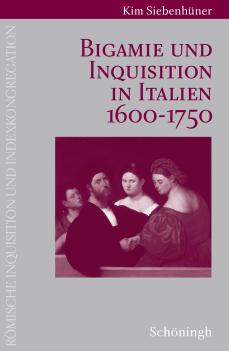Bigamie und Inquisition in Italien 1600–1750

Why did men and women become bigamists in early modern Italy and why were they persecuted by the Inquisition as suspected heretics? The inquisitors suspected those who entered bigamous marriages of an error of faith. However, bigamists did not typically enter into a second marriage because they doubted the sacrament of marriage, but for a variety of social, emotional and material reasons. After the opening of the archive of the Roman Inquisition, this author was one of the first historians to analyse the extensive files on bigamy deposited there. Based on these sources, she here presents new insights into the legal practice of the Sant'Ufficio as well as the history of marriage, migration and identity. Numerous case studies shed new light on the activities of the Faith Tribunal during the seventeenth and eighteenth centuries and on the bygone world of a society in which bigamy was a way to deal with family crises, major changes in life, mobility and successive relationships.
Kim SIEBENHÜNER , Bigamie und Inquisition in Italien 1600–1750, Paderborn et alibi 2006, 250 pages, hardcover, ISBN: 978-3-506-71388-9.

